conservation: full rebinding
-
full rebinding with new covers
An example from the Historical Society of Pennsylvania's Bank of North America Collection.
When pulled from the library's stacks the volume was missing its front cover, and the back cover tied with it was incorrect. This left the textblock weak and vulnerable. The following pre-treatment images show the text block with the incorrect back cover.
book date: 1793 - 1796 book measurements: 10 x 15 x 1.3"
 view of the text block, missing its front cover
view of the text block, missing its front coverThe pages contained beautiful manuscript writing and areas of embellishment.
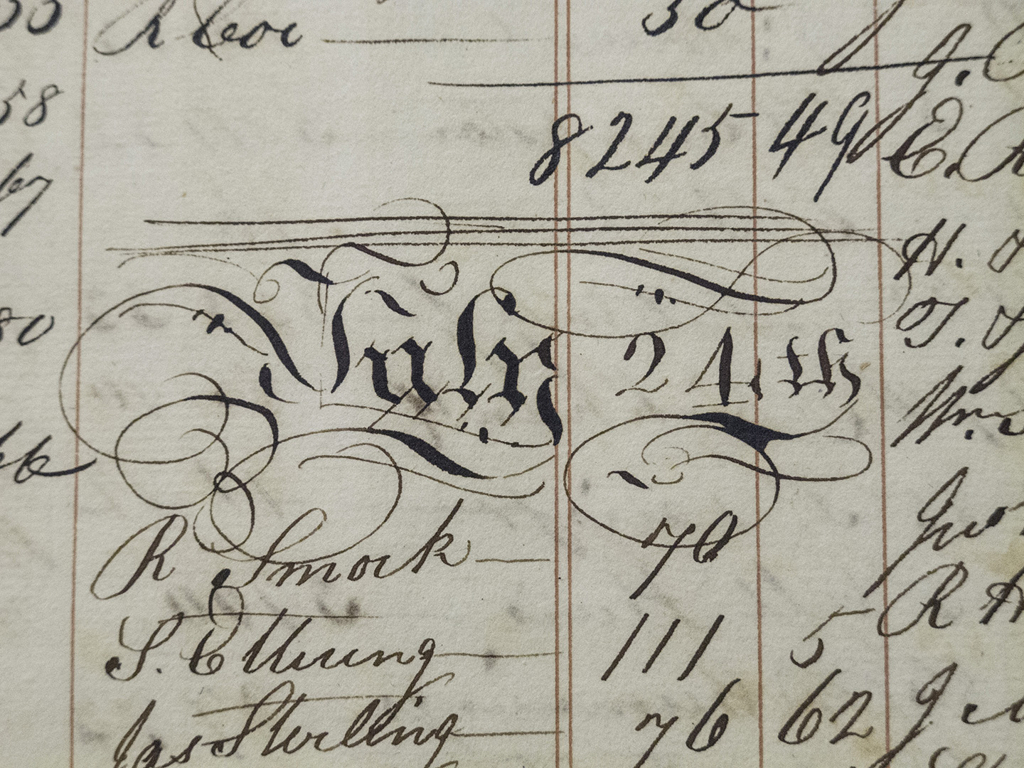
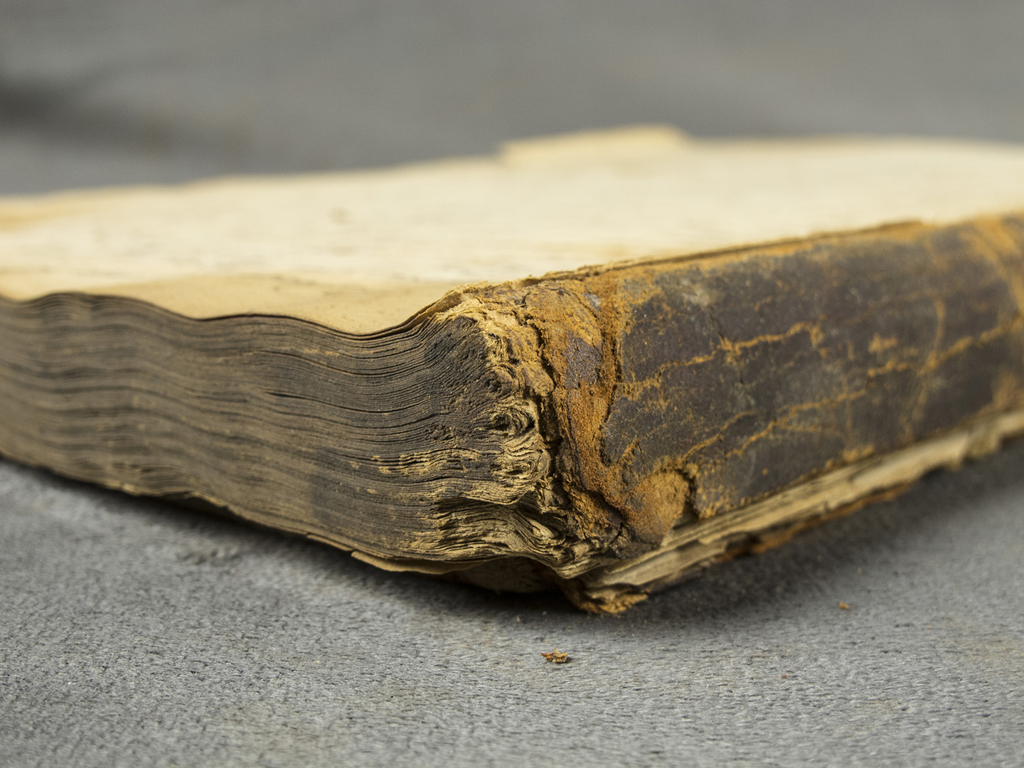 view of the spine at the head of the book
view of the spine at the head of the book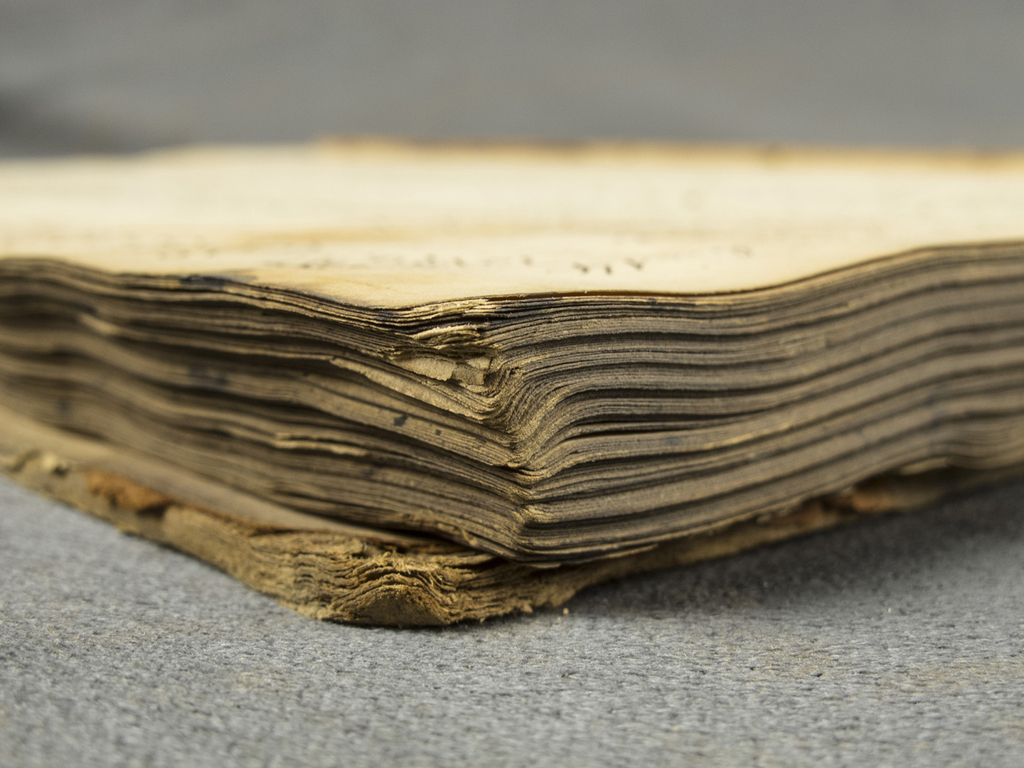 view of the foredge at the head of the book
view of the foredge at the head of the book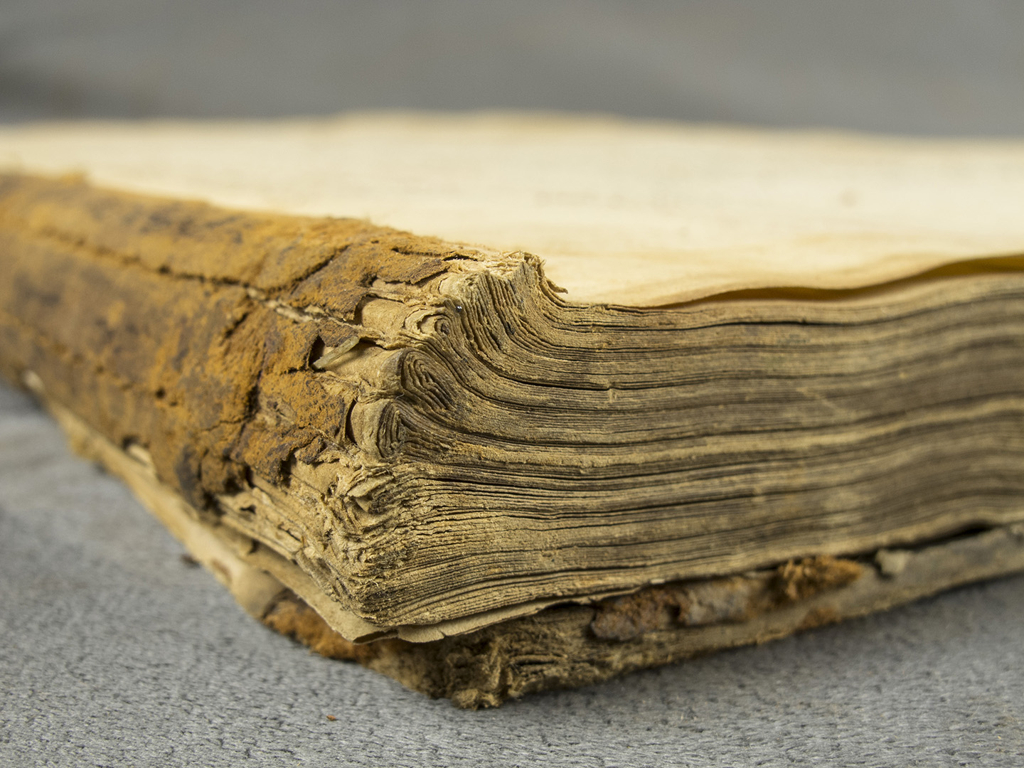 view of the spine at the tail of the book
view of the spine at the tail of the bookAs the text block was already broken, the original leather had to be removed from the spine to allow for rebinding. A wheat paste poultice was applied to aid in the removal of the original spine leather.
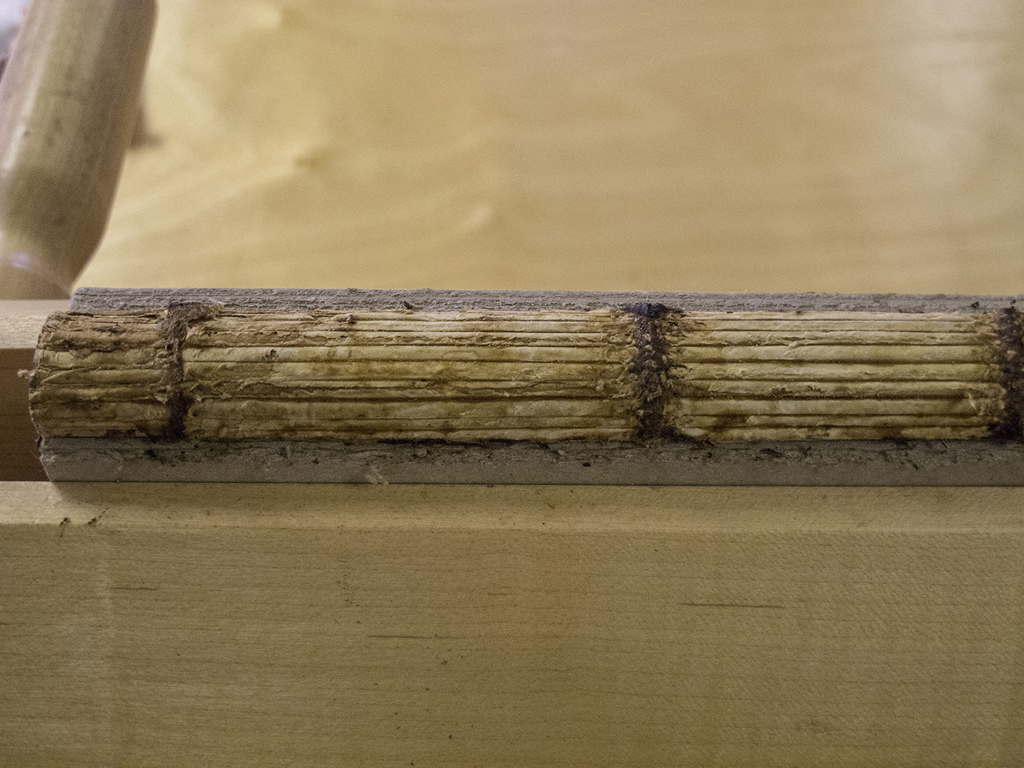 view of the the spine after leather removal
view of the the spine after leather removalAfter assessing and cleaning the pages I mended the tears in the manuscript pages with both aqueous and non-aqueous methods where appropriate (see post-treatment photos below for an example of a non-aqueous mend). The non-aqueous mends were achieved with Japanese tissue pre-coated with Klucel-g and activated with ethanol.
The folios, broken and deteriorated at their center, were guarded with Japanese tissue and wheat paste. After the signatures were reassembled and collated, I resewed the text block onto linen tapes with linen thread, including new endsheets of Bugra paper and airplane cotton to help attach the text block to its new covers.
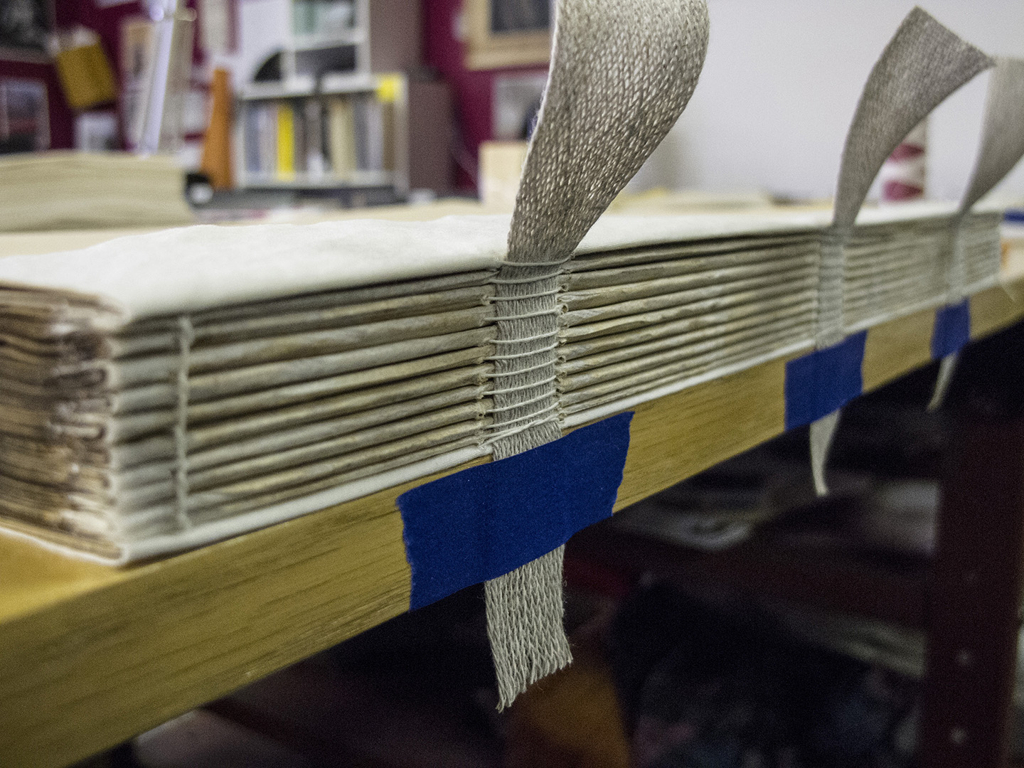 view of the resewn text block
view of the resewn text blockAfter sewing, the text block was rounded and backed, and several layers of Japanese tissue, Ingres paper, and Bugra paper were used as spine liners.
 view of book with new spine linings
view of book with new spine liningsAfter the text block was rebound, I created a new Bradel case in place of its missing covers. This case was constructed out of laminated boards, iris book cloth, paste paper made in-house, and dove's grey paper.
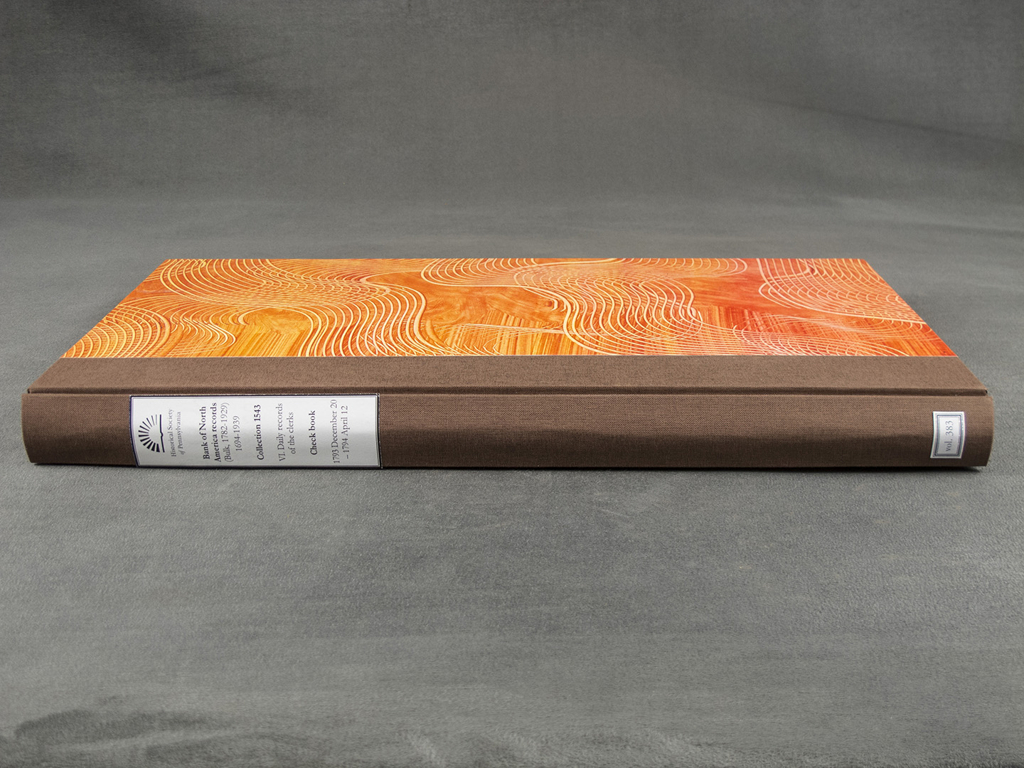 view of the new Bradel case, with spine labels
view of the new Bradel case, with spine labels view of the spine from the head of the book
view of the spine from the head of the book view of the foredge at the head of the book
view of the foredge at the head of the book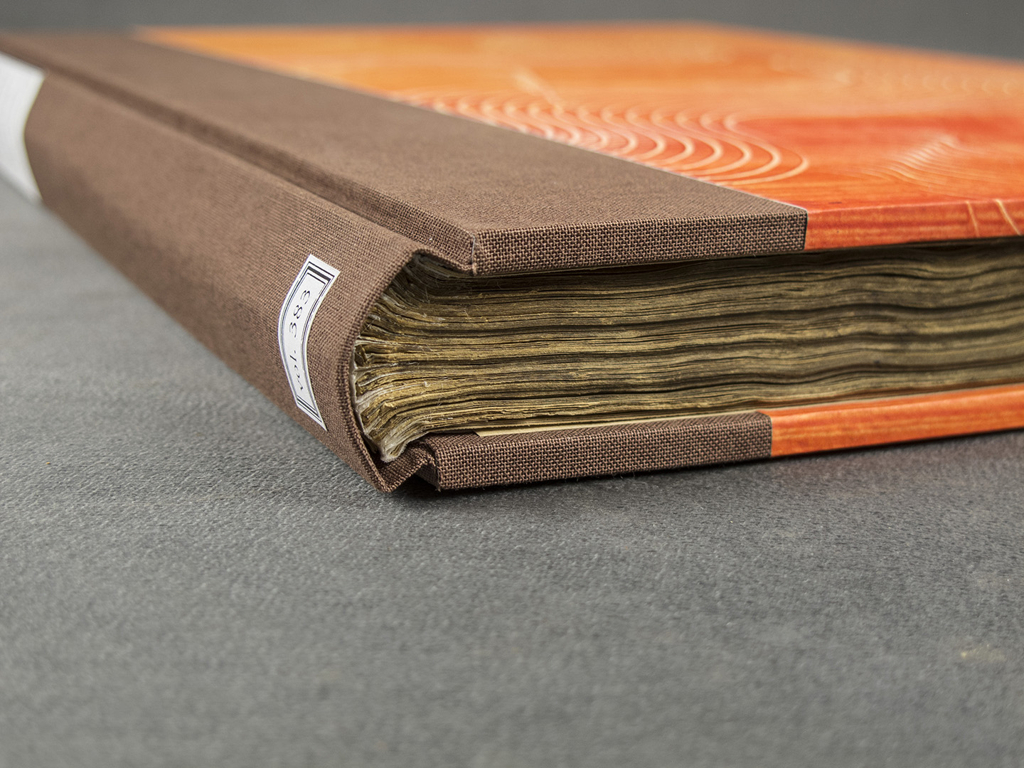 view of the spine at the tail of the book
view of the spine at the tail of the book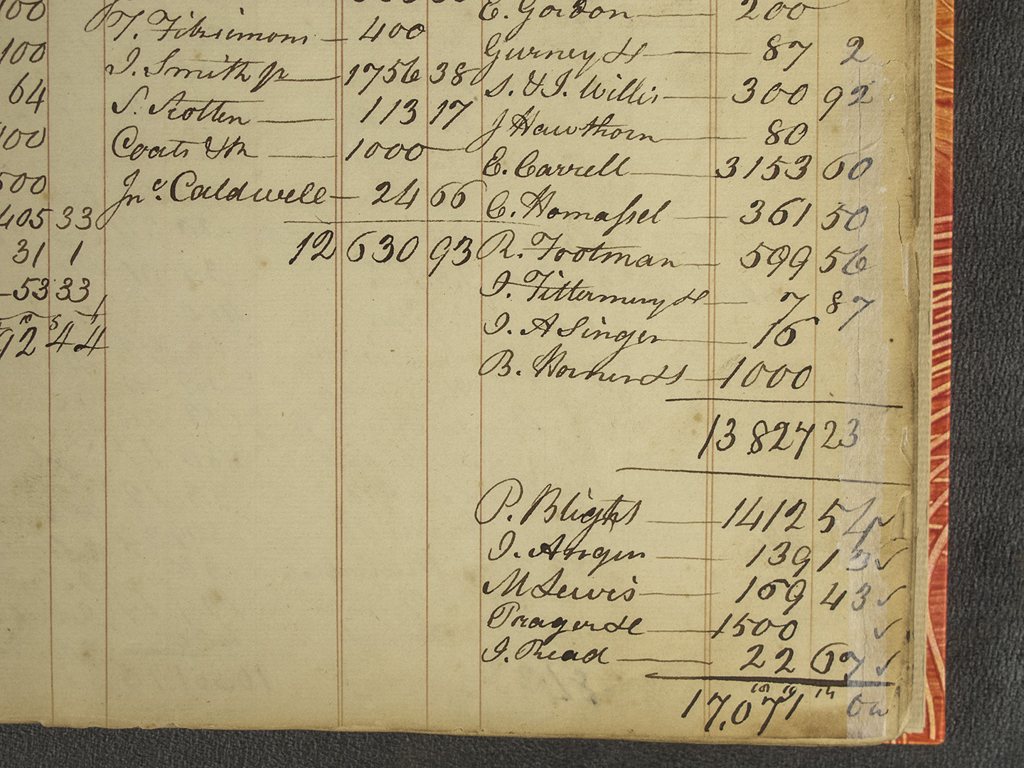
an example of a non-aqueous mend over iron gall ink script
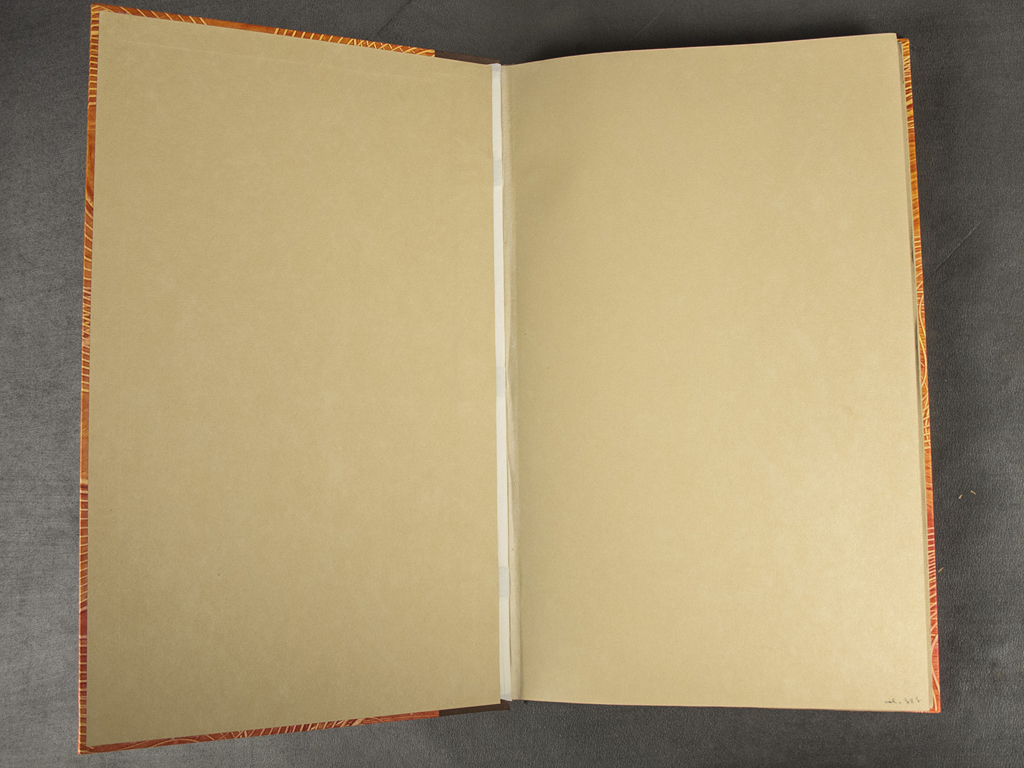 view of the interior of the cover, with new flyleaves of Bugra paper
view of the interior of the cover, with new flyleaves of Bugra paper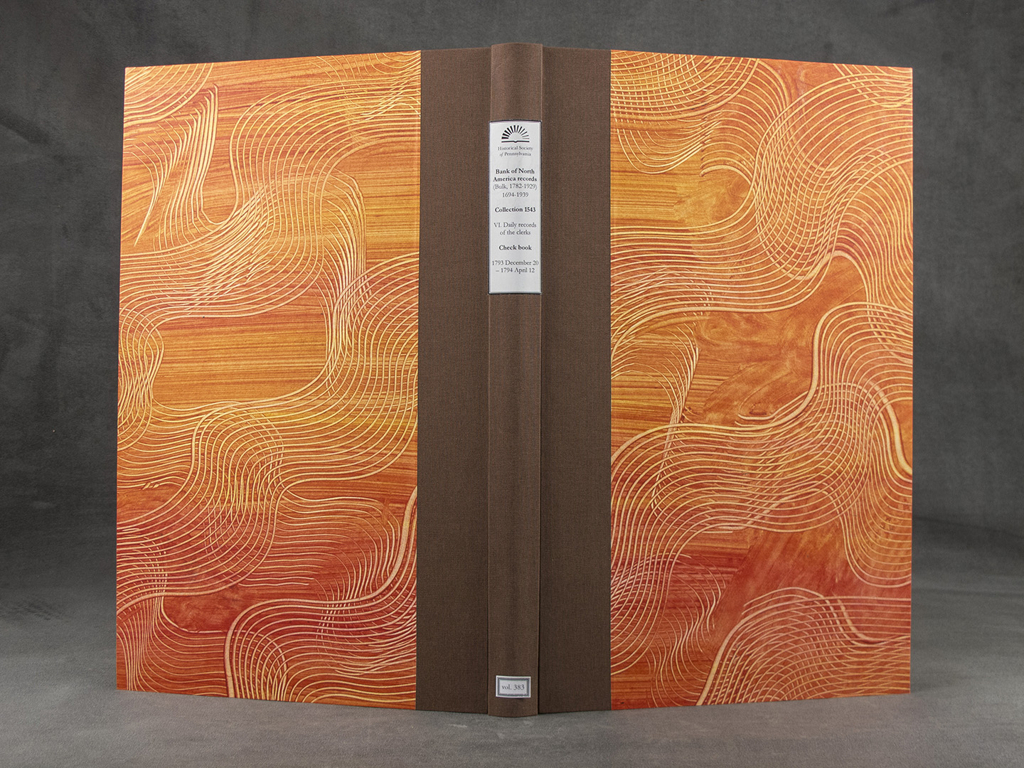 view of the completed conservation binding
view of the completed conservation binding